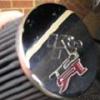Ceramic Stockies
Announcements
-
Similar Content
-
Latest Posts
-
That's a nice job, looks mint. Keen to hear it on full noise.
-
There's not a battery backup for an alarm siren or something that's somehow hot to the 12V rail?
-
By Dose Pipe Sutututu · Posted
First time, battery connected, then I went to disconnect it (thinking maybe the battery is fked). Both times, HUGE sparks went flying and shit started to glow 🥲 I'm planning to do that next, unplug the alternator. Just a bit of a pain in the arse due to the plenum and DBW, but needs to be done. Threw sparks even when I just touched the +VE jump point, even before letting go of the clamps. Good point about the amps, there's a 8 gauge going to a fuse block that splits into 2x 12 gauge. Going to be a fun process of elimination -
Random thoughts, is it possible positive jumper lead was touching either that metal box, or the oil line beside it? And just double check with battery disconnected there cables/connections aren't touching/resting on car body/other conductive material. It could even be an amp cable has come lose and is shorting, however I suspect you have fuses close to the battery for amp power supply and they would have popped (though if one only have melted, it could be why you have a higher resistance to earth now and it's not popping, so I'd double check amp wires/fuses)






Recommended Posts
Create an account or sign in to comment
You need to be a member in order to leave a comment
Create an account
Sign up for a new account in our community. It's easy!
Register a new accountSign in
Already have an account? Sign in here.
Sign In Now